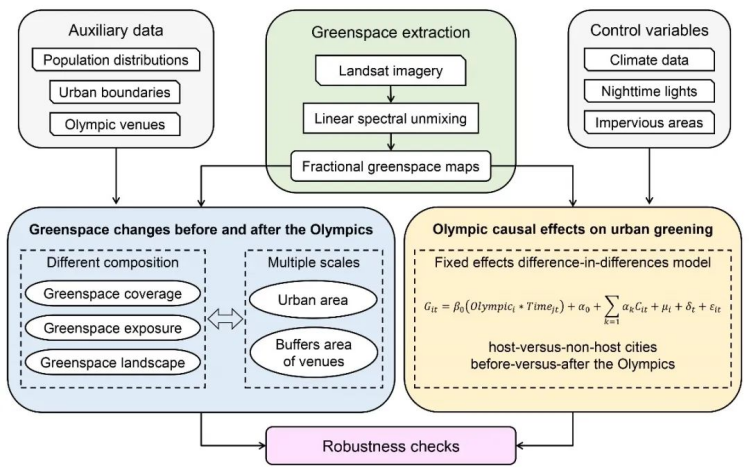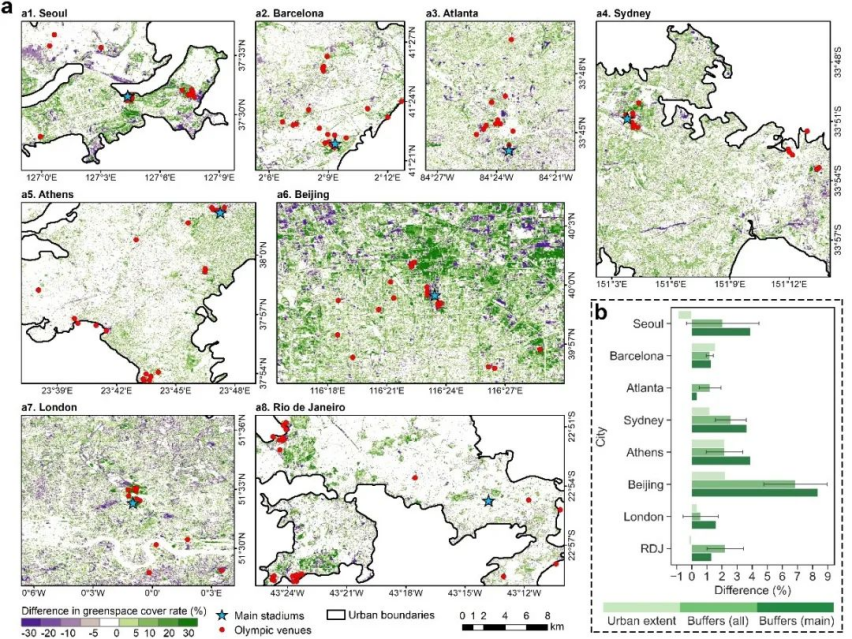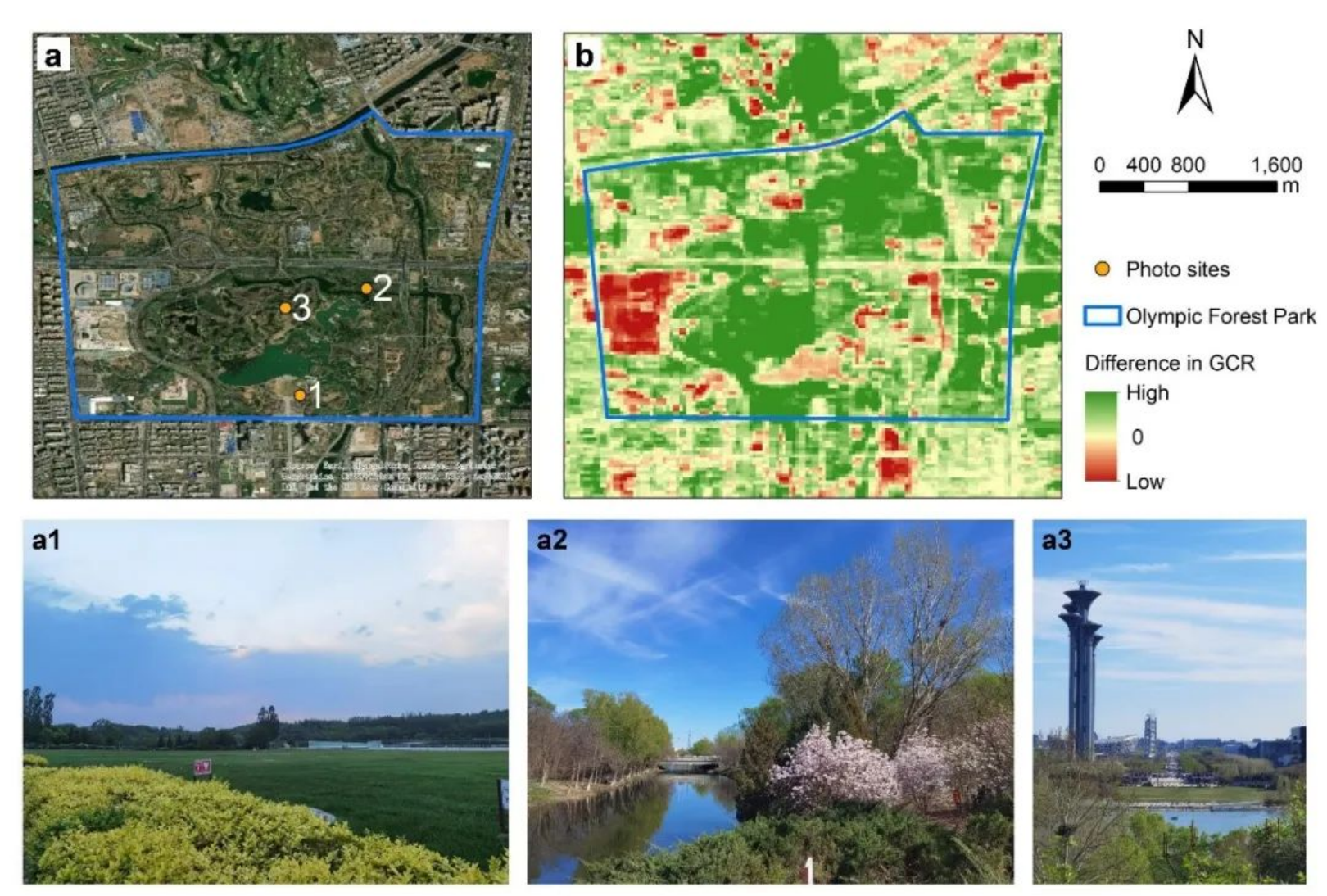The Olympic Games are one of the most influential mega-events worldwide, having exerted tremendous political, economic, social and cultural influences over the past decades, and becoming an important catalyzer promoting host cities to upgrade, transform, construct and develop themselves. As an important part of urban environment, urban greenspaces have proven to generate multiple ecological, environmental and health benefits. Yet little study has been conducted about the extent how these events transform the physical appearance of urban greenspaces and thus little is known about the process and mechanism of such events in transforming and changing urban greenspaces. To answer this scientific question, the joint research team led by Professor Xu Bing’s Research Group of Tsinghua University uses time-series satellite images to map annual greenspace distribution across eight host cities of the Summer Olympics between 1988 and 2016, and quantify changes in greenspace coverage, exposure, and landscape before and after the games. By further applying a difference-in-differences model, we unravel the underlying causal impacts of Olympic Games on urban greening. Our findings indicate the widespread Olympic effects on reshaping urban greenspaces, which provide new insights on maintaining Olympic sustainability and facilitating green city development. The relevant results have recently been published as a paper titled “Olympic effects on reshaping urban greenspace of host cities” in Landscape and Urban Planning, a top international journal on urban research.
The research team maps greenspace distributions at 30-m spatial resolution for the eight host cities in using numerous using time-series Landsat satellite imagery and the linear spectral unmixing model, and explores the impact of Olympics on urban greenspace from two perspectives: (1) Compare the changes of green space indexes before and after the Olympic Games. Combined with other geospatial data sets and multi-dimensional evaluation frameworks, the differences of greenspace coverage, exposure and landscape in different spatial scales (i.e. urban areas and buffer zones of Olympic venues) are measured; (2) Reveal the causal relationship between the hosting of the Olympic Games and the change of urban green pace coverage. A difference-in-differences (DID) model with fixed effects is used to quantify the direct contribution of the Olympic Games to urban greening, and the long-term dynamic impact of the Olympic Games is demonstrated by changing the time nodes of events in the DID model. Finally, the robustness of the results is verified based on the significance test model. The flowchart of the overall research design is shown in Fig. 1.

Fig. 1. Flowchart of the overall research design in this study.
Results show that Olympic Games not only promote overall increases in greenspace coverage but also enhance people’s ambient exposure to greenspace, of which the influencing magnitude is more evident nearby Olympic venues and the associated buffers. With regard to the 2008 Beijing Olympics, for example, Beijing saw the most prominent greenspace expansion within the 5-km buffer zones of Olympic venues (6.87 % ± 2.12 % on average), which mainly benefited from the construction of large-scale urban greenspaces such as the Olympic Forest Park.

Fig. 2. Difference in greenspace cover rate of host cities before and after the Olympic Games: (a) Spatial pattern of GCR changes, and (b) absolute changes of GCR.

Fig. 3. A typical example of the Olympic effect on urban greening: the Beijing Olympic Forest Park
According to the DID estimation, 3.41 % of the enlargement in urban greenspace coverage was contributed by the Olympics directly (P<0.01). Such greening effects started 6-7 years before hosting (the early period of bidding) and were enhanced with the arrival of games.
To conclude, four potential insights are highlighted for the upcoming Paris 2024, Los Angeles 2028, and Brisbane 2032 Summer Olympics in the hope of realizing the long-term goal of greener and more sustainable Olympics. First, adaptation to local context over space and time. Second, long-term strategic planning and periodic assessment. Third, a balance between quantity and quality. Lastly, integrated efforts for urban renovation and planning.
Tu Ying, a Grade 2019 doctoral student of the DESS, Tsinghua University, and Assistant Professor Chen Bin of the School of Architecture of the University of Hong Kong are the co-first authors of the paper; Professor Xu Bing and Assistant Professor Chen Bin of the DESS, Tsinghua University are the co-corresponding authors of the paper; Professor Yang Jun from the DESS, Tsinghua University is a co-author of the paper. This research is supported by the Major Program of the National Natural Science Foundation of China, the Tsinghua-Toyota Joint Research Fund and other funds.
Full-text link of the paper: https://doi.org/10.1016/j.landurbplan.2022.104615
Written by Tu Ying